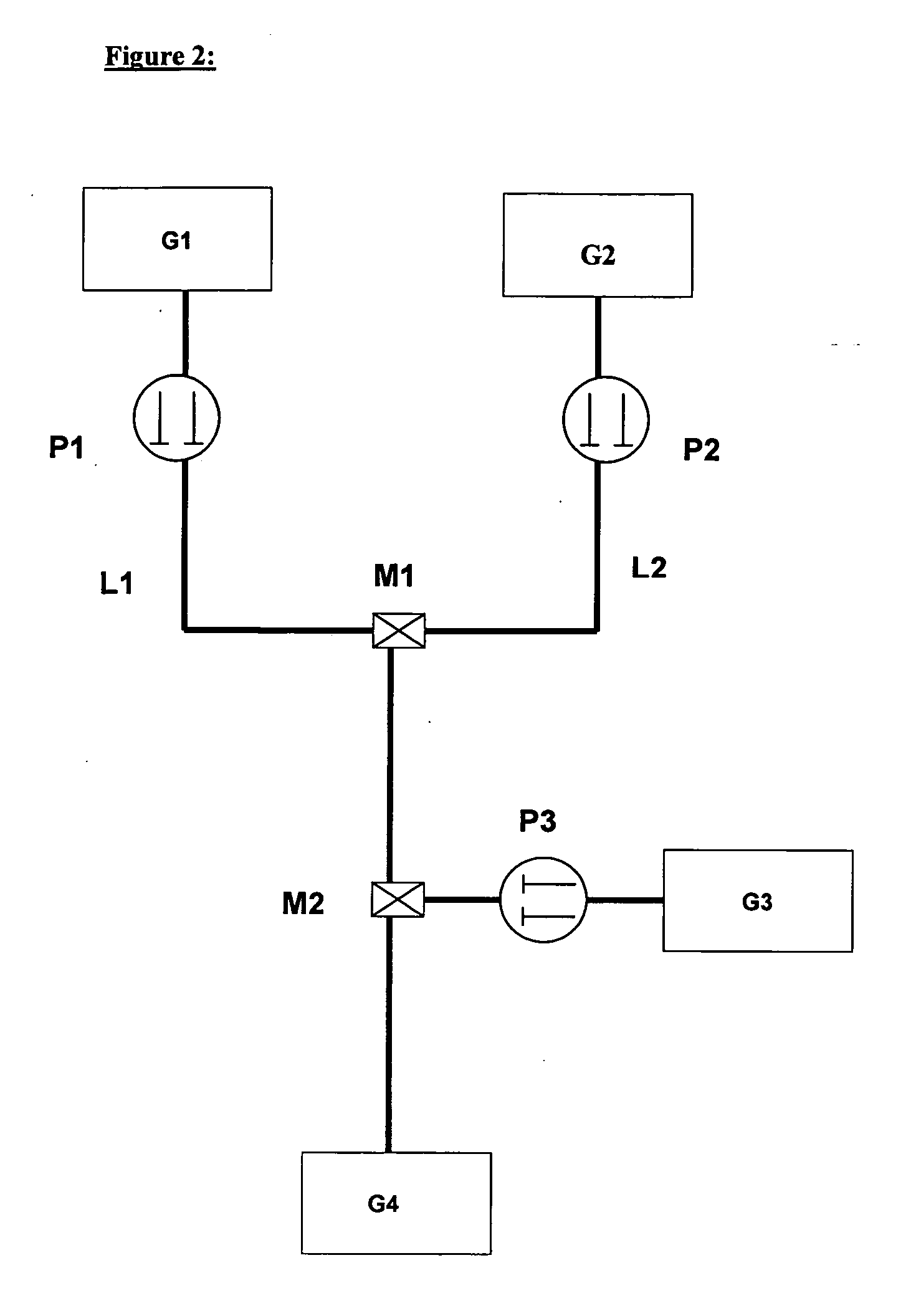Efficient Method For Loading Amphoteric Liposomes With Nucleic Acid Active Substances
a technology of amphoteric liposomes and active substances, applied in colloidal chemistry, genetic material ingredients, peptide/protein ingredients, etc., can solve the problems of sensitive components, loss of quality and product, and inability to meet the requirements of large-scale production,
- Summary
- Abstract
- Description
- Claims
- Application Information
AI Technical Summary
Benefits of technology
Problems solved by technology
Method used
Image
Examples
example 1
Production of Antisense Oligonucleotide-Loaded Amphoteric Liposomes
[0300]Variation of Various Process Parameters
[0301]In this experiment, an 18mer antisense oligonucleotide was entrapped in amphoteric liposomes having the following composition:
POPC / DOPE / MoChol / Chems15:45:20:20
[0302]The following process parameters were varied consecutively:
[0303]Lipid concentration
[0304]Temperature
[0305]NaCl concentration in the aqueous antisense solution
[0306]The production of the antisense-loaded amphoteric liposomes was effected using the apparatus represented in FIG. 1.
[0307]To combine the two metered separate streams of provided lipid solution and antisense solution, the following volume flows were selected:
[0308]Volume flow, lipid: 10 ml / min
[0309]Volume flow, antisense: 90 ml / min
[0310]The batch size produced was 40 ml each time.
[0311]To dissipate the interactions between the amphoteric liposomes and the antisense molecules following formation of the liposomes, 1 / 20 volume of 1M Tris solution, ...
example 2
Treatment of Various Amphoteric Liposomes with Increasing Amounts of Ethanol
[0335]Preparation of Various Amphoteric Liposomes with Entrapped Carboxyfluorescein Fluorescent Dye
[0336]Using lipid stock solutions in chloroform, various lipid mixtures were mixed and the solvent was removed in a rotary evaporator. The resulting lipid films were dried overnight in vacuum. Thereafter, the lipid films were hydrated with 100 mM carboxyfluorescein (CF) in PBS, pH 7.5. The resulting lipid concentration was 20 mM. The suspensions were hydrated for 20 min at RT, homogenized for 5 min in an ultrasonic bath, and finally subjected to 3 freeze-thaw cycles. Following final thawing, the liposomal suspensions were extruded 15 times through 100 nm polycarbonate membranes. Non-entrapped CF was removed by gel filtration, so that the liposomes were diluted by a factor of 3.
[0337]The following formulations were produced:
Form. 1 POPC / DOPE / MoChol / Chems 6:24:47:23Form. 2 POPC / DOPE / MoChol / DMG-Succ 6:24:35:35Form...
example 3
Preparation of Various Nucleic Acid-Loaded Amphoteric Liposomes Using 10% or 30% Ethanol Injection
[0342]The lipid mixtures were weighed and dissolved in ethanol p.a., so as to make a lipid concentration of 40 mM or 13.3 mM. 0.5 ml and 1.5 ml, respectively, of these ethanolic lipid solutions were injected into 4.5 ml and 3.5 ml, respectively, of an aqueous nucleic acid solution (18mer antisense oligonucleotide) in 90 mM acetate, 300 mM sucrose, pH 4, with stirring. The amount of antisense oligonucleotide was calculated such that an N / P ratio of 3 was obtained in the batch. Following preparation, each liposome suspension was diluted with 10 ml of 120 mM Na2HPO4, 90 mM NaCl, pH 9, so as to obtain a pH value of >7. To determine the inclusion efficiency, non-entrapped antisense oligonucleotide was removed using Centriprep ultrafiltration units (100 kDa MWCO) and determined using OD measurement at 260 nm. Following dilution of the samples (max. 1% ethanol) in PBS, the size of the liposome...
PUM
| Property | Measurement | Unit |
|---|---|---|
| pH | aaaaa | aaaaa |
| size | aaaaa | aaaaa |
| size | aaaaa | aaaaa |
Abstract
Description
Claims
Application Information
 Login to View More
Login to View More - R&D
- Intellectual Property
- Life Sciences
- Materials
- Tech Scout
- Unparalleled Data Quality
- Higher Quality Content
- 60% Fewer Hallucinations
Browse by: Latest US Patents, China's latest patents, Technical Efficacy Thesaurus, Application Domain, Technology Topic, Popular Technical Reports.
© 2025 PatSnap. All rights reserved.Legal|Privacy policy|Modern Slavery Act Transparency Statement|Sitemap|About US| Contact US: help@patsnap.com



